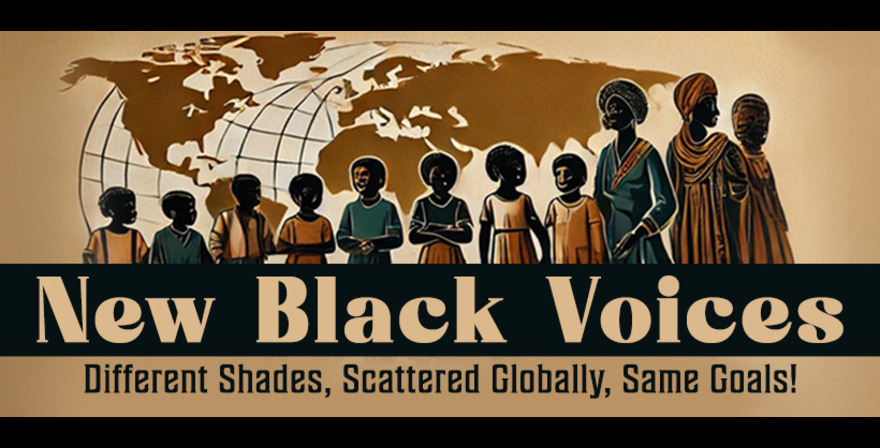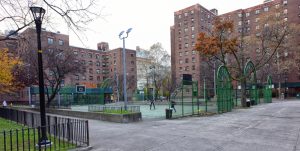By Lynn Spivey, President, NACCP-NYCHA Branch
President Trump’s 2025 executive orders mark a major policy shift, rolling back protections aimed at addressing systemic inequality. These changes could deepen racial disparities in jobs, housing, education, and environmental health. Civil rights groups are calling for urgent action to uphold equity and justice in government.
Introduction
In 2025, President Donald Trump enacted a series of executive orders that have sparked significant concern among civil rights advocates, particularly regarding their disproportionate impact on communities of color. These orders, aimed at restructuring federal policies on civil rights, diversity, equity, and inclusion (DEI), have led to widespread debates about their implications for marginalized groups. This analysis delves into the specific executive orders issued, their immediate and long-term effects on people of color, and the responses from organizations like the NAACP-NYCHA Branch.
- Dismantling Disparate Impact Protections
One of the most consequential actions taken by the Trump administration was the elimination of the federal government’s use of disparate-impact liability. This legal standard allows courts to challenge policies that, while not overtly discriminatory, disproportionately harm protected groups such as racial minorities, women, and the disabled. By instructing federal agencies to deprioritize enforcement of such regulations and calling for the repeal of parts of the Civil Rights Act of 1964, the administration has effectively weakened a crucial tool for combating systemic discrimination.
Implications:
- Employment: Employers may now implement policies that, while neutral on their face, could disproportionately exclude minority candidates without fear of federal repercussions.
- Housing: Landlords and housing authorities might adopt practices that inadvertently disadvantage people of color, such as credit score requirements or criminal background checks, without violating federal law.
- Education: School policies that result in unequal disciplinary actions or resource allocations could persist unchecked, exacerbating educational disparities.
- Rolling Back DEI Initiatives
President Trump’s executive orders have also targeted DEI programs across federal agencies. By halting these initiatives, the administration argues for a merit-based system, claiming that DEI programs promote reverse discrimination.
Consequences:
- Federal Workforce: The elimination of DEI offices and programs may lead to decreased representation of minorities in federal employment and leadership positions.
- Contracting: Minority-owned businesses that previously benefited from federal contracts aimed at promoting diversity may face reduced opportunities.
- Community Programs: Grants and support for community-based organizations focusing on racial equity may be rescinded, affecting services in underserved areas.
- Impact on Public Housing and Urban Communities
The New York City Housing Authority (NYCHA) and similar entities nationwide are bracing for the effects of federal funding freezes and policy shifts. The administration’s scrutiny of programs like Section 8 vouchers threatens the stability of housing for many low-income families, predominantly people of color.
Potential Outcomes:
- Housing Instability: Reduced funding could lead to longer waitlists, deteriorating living conditions, and increased homelessness in urban communities.
- Gentrification: Without adequate support, public housing units may be sold to private developers, accelerating displacement in historically Black and Latino neighborhoods.
- Community Disruption: Cuts to community programs associated with public housing can erode support networks vital for residents’ well-being.
- Educational Equity Under Threat
Executive orders have also extended to the education sector, with directives aimed at limiting DEI initiatives in K-12 schools. Federal judges have temporarily blocked some of these directives, citing potential legal and constitutional violations.
Risks:
- Curriculum Changes: Schools may face pressure to remove content addressing racial history and social justice, impacting students’ understanding of systemic issues.
- Resource Allocation: Programs designed to support minority students, such as scholarships and mentorships, may be defunded.
- School Climate: The rollback of DEI initiatives could foster environments less inclusive of diverse student populations, affecting academic performance and mental health.
- Environmental Justice Concerns
The administration’s decision to end key Environmental Protection Agency (EPA) programs focused on environmental justice has raised alarms. These programs aimed to protect minority communities from disproportionate exposure to pollution.
Impacts:
- Health Risks: Communities of color, often located near industrial zones, may experience increased exposure to harmful pollutants without federal oversight.
- Legal Challenges: The cessation of lawsuits against companies accused of environmental violations leaves affected communities with limited recourse.
- Resource Loss: The termination of grants for clean energy and infrastructure projects in minority neighborhoods stalls progress toward environmental equity.
- Civil Rights Organizations Respond
The NAACP-NYCHA Branch and other civil rights groups have been vocal in their opposition to these executive orders. They argue that the dismantling of DEI programs and civil rights protections undermines decades of progress toward racial equality.
Actions Taken:
- Legal Challenges: Lawsuits have been filed against the administration, alleging that the executive orders violate constitutional rights and federal laws.
- Public Advocacy: Campaigns to raise awareness about the implications of these policies aim to mobilize public opinion and political action.
- Policy Proposals: Civil rights organizations are developing alternative policy frameworks to promote equity and inclusion at state and local levels.
Conclusion
President Trump’s 2025 executive orders represent a significant shift in federal policy, with profound implications for communities of color. By rolling back protections and programs designed to address systemic inequalities, these actions risk exacerbating disparities in employment, housing, education, and environmental health. The responses from civil rights organizations underscore the urgency of addressing these challenges to ensure that the principles of equity and justice remain central to American governance.
References
- Washington Post. (2025, April 24). Trump signs executive order dismantling disparate impact protections. Retrieved from
- Associated Press. (2025, April 24). Trump ends DEI efforts across federal government. Retrieved from
- The City. (2025, January 30). NYCHA braces for cuts amid federal policy shifts. Retrieved from
- Politico. (2025, April 24). Federal judge temporarily blocks Trump’s education executive order. Retrieved from
- Reuters. (2025, April 23). Trump’s EPA ends environmental justice programs; minority communities may pay the price. Retrieved from
- NAACP. (2025, April). NAACP condemns rollback of DEI programs. Retrieved from
Extended Commentary: Why These Executive Orders Matter
Historical Context
Communities of color have long depended on disparate-impact doctrine, DEI initiatives, and federal protections to counteract the deep roots of systemic discrimination in the United States. Eliminating these legal and policy tools does not create a neutral system; instead, it reinforces historical inequities by ignoring the accumulated disadvantages that marginalized groups face.
Institutional Racism: A Subtle Resurgence
By removing the structures designed to recognize and remedy systemic inequities, President Trump’s 2025 executive orders inadvertently (or perhaps deliberately) set the stage for institutional racism to proliferate in less visible, but highly damaging ways. Without federal checks:
- Banks could disproportionately deny loans to Black and Latino applicants under the guise of “neutral” criteria.
- Schools could maintain practices that disadvantage students of color, from resource distribution to disciplinary actions.
- Employers could uphold discriminatory hiring patterns without fear of investigation.
Economic Implications
The rollback of DEI in government contracting, hiring, and grant-making hits the economic foundations of communities of color particularly hard. Opportunities that were hard-won after decades of advocacy are being systematically dismantled, threatening to widen the racial wealth gap even further.
Environmental Racism
The elimination of environmental justice protections under the EPA exacerbates existing disparities. Communities of color have historically borne the brunt of environmental hazards — from lead in drinking water to exposure to hazardous waste — and without federal enforcement, these risks grow unchecked.
Housing Crisis Deepens
Public housing systems like NYCHA, already underfunded, are set to suffer even more severe neglect. The retreat of federal responsibility paves the way for privatization and gentrification, displacing vulnerable populations and reshaping urban landscapes in ways that marginalize Black and Brown residents.
Looking Ahead: Strategies for Resistance and Resilience
- Legal Action
Civil rights organizations are mounting aggressive legal challenges. Courts have already temporarily blocked some education-related executive orders, and further lawsuits are in the pipeline. Advocates aim to demonstrate that these policies violate existing constitutional protections under the Equal Protection Clause.
- State and Local Initiatives
In states like New York, California, and Illinois, local governments are stepping up efforts to maintain and even expand DEI programs independently of federal funding. Cities are also passing ordinances that protect tenants, workers, and students from the consequences of federal rollbacks.
- Grassroots Mobilization
Communities most affected are organizing at the grassroots level:
- Mobilizing voters ahead of the 2026 midterms.
- Creating mutual aid networks to support displaced tenants and struggling families.
- Forming alliances between labor unions, student groups, and environmental activists.
- Public Awareness Campaigns
A major part of the fightback strategy involves educating the broader public about the stakes involved. Civil rights leaders are working to reframe the conversation, emphasizing that DEI and disparate-impact protections are about fairness — not about giving “special treatment” — and that their removal harms everyone, by deepening division and inequality.
Final Thoughts: A Critical Crossroads
The 2025 executive orders represent a pivotal moment in the struggle for racial justice in America. While framed as efforts to promote “colorblind” governance, their real-world impact paints a far more troubling picture. They reveal the ways that racism adapts to new political landscapes — subtle, systemic, and devastating.
For people of color in America, the stakes could not be higher. The coming years will determine whether the gains of the past half-century can be preserved and expanded — or whether they will be systematically dismantled, piece by piece.
The work of NYCHA-NYCHA Branch, and allied organizations will be crucial in fighting back against these regressive changes, defending hard-won rights, and pushing for a truly equitable society.
To learn more about the NAACP-NYCHA Branch, please visit: https://naacpnycha.org/




